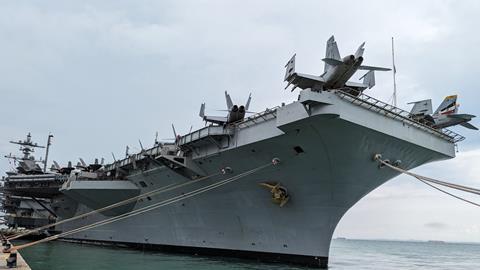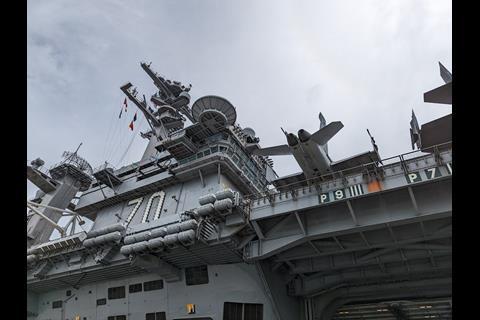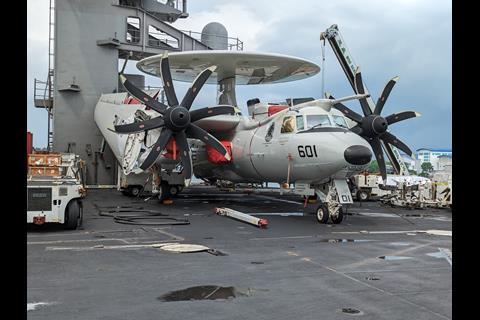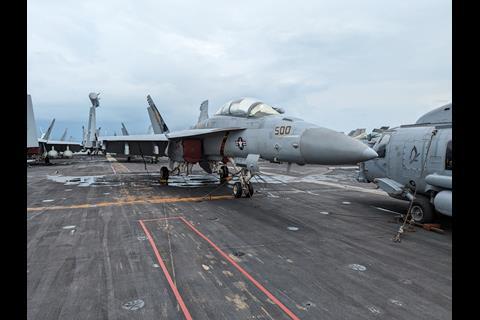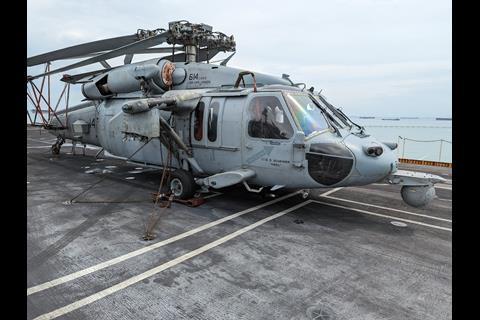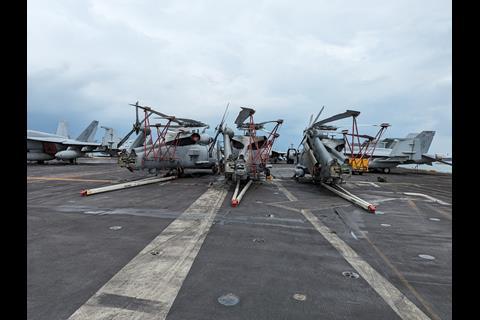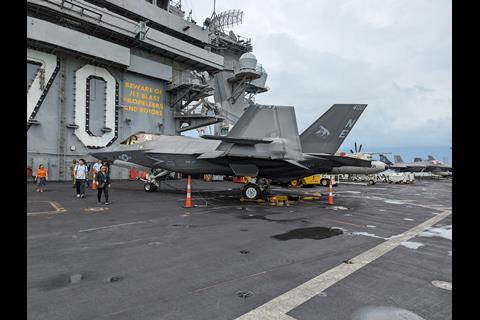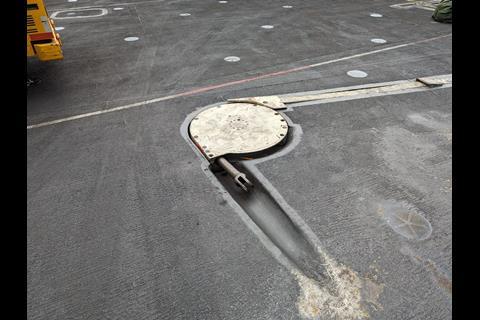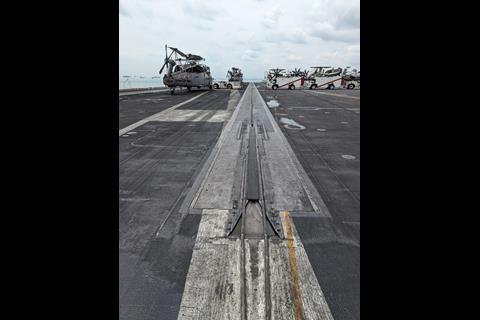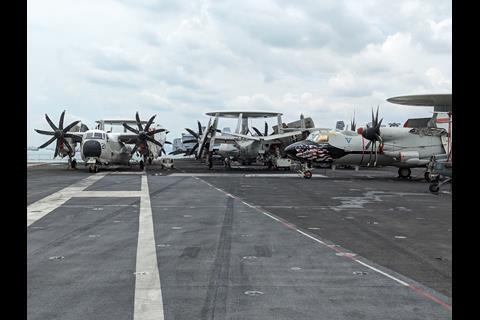The US Navy (USN) aircraft carrier USS Carl Vinson is deployed with the Block III version of the Boeing F/A-18E/F Super Hornet, boosting the effectiveness of its air wing.
Carl Vinson’s Block III-standard fighters serve with Strike Fighter Squadron VFA-113, also known as the ‘Stingers’, according to USN Rear Admiral Carlos Sardiello, commander of Carrier Strike Group One.

In addition, Carl Vinson carries two squadrons of Block II Super Hornets, one squadron of Lockheed Martin F-35Cs, and one squadron of EA-18G Growler electronic warfare aircraft.
Carl Vinson – a Nimitz-class vessel – also carries the Northrop Grumman E-2D Hawkeye airborne early warning and control aircraft as well as Sikorsky MH-60R/S helicopters.
Sardiello says that having the latest fourth- and fifth-generation fighters serving together offers a “very capable combination”.
“We rehearse on a regular basis to ensure that we are ready, relevant and able to conduct our full range of missions.
“Having both fifth-generation F-35s and Block III Super Hornets is a great additive capability to our air wing,” adds Carl Vinson’s commanding officer, Captain Matthew Thomas. “They bring a lot of avionics capabilities that make us more capable and lethal.”
He says that the USN continuously adapts how it operates aircraft, noting that the deck handling and launch/recovery characteristics of the Block II and Block III Super Hornet are much the same.
Sardiello and Thomas made the remarks in an interaction with reporters during a visit by Carl Vinson and escort ships to Singapore.

Boeing delivered the first Block III Super Hornet to the USN in 2021. The updated aircraft features advanced cockpit displays including a large touchscreen, improved networking, open mission systems, a reduced radar cross section, and 10,000h airframe life.
A key element of the upgrade is a new processor. Boeing says this can do more work in shorter timeframes, thus improving situational awareness. The aircraft can also be upgraded throughout its lifetime with what Boeing calls “app-based solutions”.
The improved networking and processing power are also seen as enhancing the Super Hornet’s capabilities in dynamic ‘kill webs’ that integrate a broad range of aircraft and other platforms.
Sardiello also touched on the impact of the fleetwide grounding of the Bell Boeing V-22 fleet following the deadly crash of a US Air Force CV-22 off Japan on 6 December. The grounding also affects the CMV-22B, which is replacing the C-2A Greyhound in the important carrier onboard delivery (COD) mission.
The grounding has implications for embarked F-35Cs, as one mission for the tiltrotor is carrying the fighter’s Pratt & Whitney F135 powerplant to and from carriers.
Sardiello points out that the USN has redundancy in its logistical support capabilities, and that C-2As that ordinarily serve with the Japan-based USS Ronald Reagan have been dispatched to support Carl Vinson.
Moreover, Carl Vinson has substantial F135 support capabilities in its own right.
“We have a fully supplied and fully capable aviation maintenance facility embarked,” says Sardiello.
“We’re a floating city, and we carry engine components – including an engine – onboard. So, given the high reliability of those engines, we don’t see an impact right now. If we had to change an engine we could, and the F-35s have been rock solid.”
RAYTHEON TO COMPETE WITH L3HARRIS FOR SUPER HORNET EW/RWR
Raytheon has secured an $80 million US Navy contract to continue development of its ADVEW electronic warfare system for the F/A-18E/F Super Hornet, as the service seeks to replace the fighter’s legacy EW system and radar warning receiver (RWR) with a consolidated solution.
The contract is part of a downselect to determine the next provider for the Super Hornet’s EW/RWR equipment.
“These advancements are paving the way for the next generation of electronic warfare,” says Bryan Rosselli, president of Advanced Products & Solutions at Raytheon.
“We are completely replacing and consolidating the legacy systems into a one-box solution that will deliver a generational refresh to the electronic warfare capability for the lifetime of the Super Hornet.”
Raytheon’s contract announcement follows L3Harris’s announcement in November that it too had received an $80 million contract to develop a new EW/RWR system for the Super Hornet.
L3Harris said that a final decision between the two providers is expected in 2026.





















